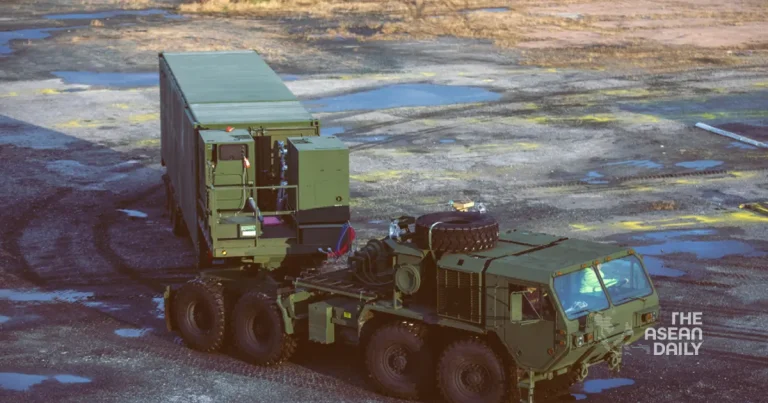24-9-2024 (MANILA) The United States’ decision to maintain its advanced Typhon missile system in the Philippines indefinitely has sparked intense debate among security analysts, who view it as a high-stakes move that could both bolster Manila’s deterrence capabilities and potentially exacerbate tensions with China.
The deployment of the Typhon system, capable of striking targets over 2,500km away, places critical areas such as the South China Sea and the Taiwan Strait within its operational range. This strategic positioning has raised concerns about the delicate balance of power in the region and its potential impact on the ongoing territorial disputes between the Philippines and China.
Vincent Kyle Parada, a former defence analyst for the Philippine Navy and current graduate student at Singapore’s Nanyang Technological University, described the situation as a “strategic quandary”. He explained, “If the US and the Philippines retain the Typhon, China will perceive it as a threat to its neighbourhood. Conversely, removing the system could be seen as acquiescing to Beijing’s demands, forfeiting crucial tactical and strategic advantages.”
The Typhon launcher, also known as the Mid-Range Capability (MRC), was initially deployed by the US Army in Northern Luzon during a joint training exercise in April. Its continued presence has allowed Philippine troops to familiarise themselves with its operations, signalling a deepening of military cooperation between the two allies.
Despite earlier indications from Manila that the system might be withdrawn by September, recent reports suggest that the US has no immediate plans for its removal, despite pressure from Beijing. This decision underscores the strategic importance Washington and Manila place on maintaining a strong deterrent presence in the region.
Dr Sherwin Ona, a political science professor at De La Salle University, views the Typhon’s deployment as a reflection of the robust security alliance between the Philippines and the US. He suggests that it could potentially serve to operationalise their 1951 Mutual Defence Treaty (MDT), which commits both nations to assist each other in the face of external aggression.
However, Dr Ona also highlighted the inherent risks of such a deployment. “In the event of an open conflict, these sites would likely be primary targets for pre-emptive or counterstrikes,” he cautioned. Nevertheless, he emphasised the importance for the Philippines to seize this opportunity to enhance its missile defence capabilities, building upon recent acquisitions such as the BrahMos supersonic cruise missile system from India.
The presence of the Typhon system is seen by some analysts as a necessary countermeasure to China’s growing missile capabilities in the region. Chris Gardiner, CEO of the Institute for Regional Security in Canberra, pointed out that systems like the Typhon are crucial for neutralising the threat posed by China’s advanced DF-21D “carrier killer” missile system.
“What we’re witnessing is the defensive and deterrent balancing of Chinese assets and systems intended to constrain Philippine sovereignty,” Gardiner explained. He added that the Typhon’s presence forces China to reconsider the potential losses it might incur in any maritime attack, thereby enhancing the system’s deterrent effect.
The deployment comes against a backdrop of rising tensions in the South China Sea, where China has been accused of employing aggressive “grey-zone” tactics to assert its territorial claims. These actions have included the use of water cannons and high-intensity lasers against Philippine vessels, raising concerns about the potential for escalation.
Joshua Espeña, a defence analyst and resident fellow at the International Development and Security Cooperation, highlighted the Philippines’ limited missile range capabilities as a key factor in the decision to host the Typhon system. He noted that while the deployment carries the risk of provoking China’s ire, it also presents an opportunity for the Philippines to enhance its deterrence capabilities in the long term.




